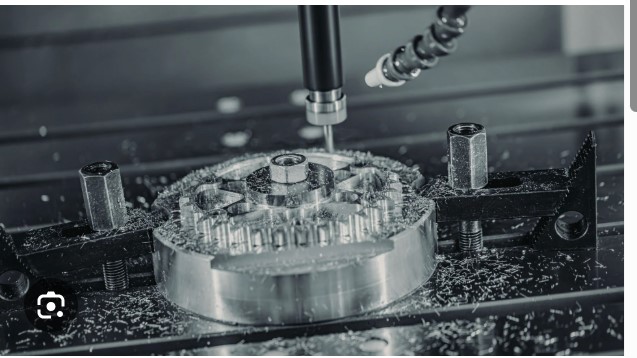
For design engineers, it’s tempting to believe that any geometry the CAD software allows can be made on a CNC machine. In practice, manufacturability is the first filter a component must pass.
A manufacturing team doesn’t just look at the dimensions; they mentally map the model to a process sequence:
- How many setups are needed to access all the features?
- Where will the datum surfaces be, and how will the part be clamped?
- Which features demand milling, which require turning, and which will need grinding or honing afterwards?
- Are there long, thin sections that may distort under cutting forces or heat?
- Do internal channels demand deep hole drilling, or even EDM?
When this thinking happens early, small design tweaks – shifting a radius, changing a chamfer, opening up a corner – can dramatically simplify the process, reduce cost, and improve consistency. When it happens late, after the drawing is frozen, it usually results in stress, delays, and uncomfortable trade-offs.
Choosing Materials With The Process In Mind
Material selection is often driven by performance requirements: strength, hardness, corrosion resistance, thermal stability. But what looks perfect on a datasheet might be a nightmare to machine or source at scale.
Modern precision manufacturers work with several main material families and know where each truly belongs.
Metals and alloys
Steel, stainless steel, aluminium, and nickel-based alloys remain the backbone of many designs. They are:
- Well understood in terms of machinability and heat treatment
- Available in a wide range of grades and product forms
- Supported by an enormous ecosystem of tooling and process knowledge
Within metals, subtle grade choices can make a big difference. A slightly different alloy or hardness target can reduce tool wear, improve dimensional stability, or shorten cycle times without sacrificing performance.
Tungsten carbide
Tungsten carbide steps in when wear is extreme: valve seats, nozzles, punches, forming tools, metering components. Its hardness and abrasion here resistance are huge assets – but they come at a price in terms of processing difficulty.
Carbide parts typically start life as powder, then go through pressing and sintering to create blanks, followed by grinding and polishing. That entire chain has to be controlled to achieve the right density, microstructure, and final geometry. You don’t “machine” carbide the way you do steel; you sculpt it with diamond tools under carefully managed conditions.
Technical ceramics
Ceramics such as alumina, zirconia, silicon carbide, MACOR, and boron nitride bring distinctive properties: electrical insulation, chemical resistance, high-temperature stability, and very low wear. They are ideal for semiconductor tools, chemical processing equipment, medical devices, and high-temperature fixtures.
But they are also brittle and unforgiving. Design details like wall thickness transitions, corners, and hole placement must respect ceramic behaviour, or parts will crack in sintering or under load. Experienced manufacturers will flag risky features early and recommend safer geometries or alternative grades.
Industrial rubies and sapphires
Synthetic rubies and sapphires sound exotic, but in many industries they’re workhorses: used in small nozzles, bearings, windows, and metering elements. Their extreme hardness and chemical stability make them perfect for precise, long-life components in harsh environments.
Processing them is almost a craft of its own, combining specialised grinding, lapping, and polishing with meticulous inspection. When a design calls for these materials, you need a partner that has mastered them – not one experimenting on your project.
Tolerances, Surfaces, And The Cost Of Perfection
In high-performance systems, tolerances and surface finishes are not cosmetic. They define how well components seal, rotate, slide, or transmit torque. But there is a balance to strike.
Over-tightening tolerances everywhere can:
- Force parts into grinding and honing unnecessarily
- Increase scrap rates and inspection time
- Extend lead times and raise costs without adding functional value
Under-specifying tolerances, on the other hand, risks leaks, vibration, noise, and premature failure.
A strong manufacturing partner will challenge drawings where tolerances look unrealistic or misaligned with function. They might suggest:
- Loosening non-critical features that only serve as reference or clearance
- Tightening truly functional interfaces like bearing fits, sealing diameters, or gear teeth
- Specifying surface roughness values that match lubrication and contact conditions, rather than default “very smooth everywhere” habits
The goal is not perfection in every dimension; it’s precision where it matters, achieved repeatably in a cost-effective way.
From Prototype To Stable Series Production
The path from first article to thousands of parts per year is rarely linear. Designs evolve, materials are fine-tuned, and processes are adjusted. Handling this journey smoothly requires both flexibility and discipline.
Early stages: learning fast
In the prototype phase, speed and learning matter more than cost per piece. Manufacturers might use:
- Flexible 3-axis and 5-axis machining centers
- Temporary fixtures
- 3D printing for auxiliary tooling or even some component features
This is where many practical issues are identified: tool access problems, potential distortion, ambiguous drawing notes, or unrealistic tolerances. A partner who shares this feedback early saves months later.
Industrialisation: locking in the process
Once the design stabilises, the focus shifts to repeatability and efficiency:
- Dedicated fixtures are built to reduce setup time and improve datum control.
- Tooling strategies are optimised for tool life and surface quality.
- Inline and end-of-line inspection plans are defined.
- For gears, hydraulic components, or assemblies, specific test routines are developed.
By the time full series production begins, the process should be robust enough that each batch looks and behaves like the previous one – even if it’s run months apart.
Assemblies Instead Of Loose Parts
A notable trend in advanced manufacturing is the move towards delivering fully assembled modules rather than just individual components.
Instead of buying:
- A machined housing from one supplier
- Tungsten carbide seats from another
- Ceramic guides from a third
- Standard seals and fasteners separately
Customers increasingly prefer one partner that can:
- Manufacture metal, carbide, ceramic, and gemstone components
- Source or produce seals and standard elements
- Assemble everything to specification
- Test the finished module for leakage, torque, flow, or other functional parameters
This approach:
- Reduces internal assembly work
- Cuts down on incoming inspections and logistics overhead
- Limits the number of interfaces where something can go wrong
For critical systems, having one responsible partner for the entire subassembly also makes root cause analysis and continuous improvement much easier.
What A Good Manufacturing Partner Looks Like In Practice
For teams searching for a long-term supplier, it helps to think beyond price and geography. Some practical signals of a strong precision manufacturing partner include:
- Process diversity – Not just milling and turning, but grinding, honing, gear processing, deep hole drilling, and assembly capabilities.
- Material depth – Comfort working with steels, stainless, aluminium, carbide, ceramics, and synthetic gemstones, with clear explanations of when each is appropriate.
- Serious metrology – Climate-controlled measurement rooms, modern CMMs, and documented quality procedures.
- Engineering engagement – Willingness to discuss design intent, recommend changes, and share process limitations honestly.
- Lifecycle support – The ability to help with prototypes, pre-series, full production, and possible redesigns or cost-reduction efforts over time.
The best relationships feel less like buying “machining time” and more like adding a specialised engineering and production department to your own organisation.
Designing For Reality Without Compromising Ambition
Complex machines will only get more demanding: more power in less space, more precise control, tougher environments, longer lifetimes. That inevitably puts more pressure on the components hidden inside – and on the manufacturers who create them.
Designing for this reality doesn’t mean giving up ambitious ideas. It means involving manufacturing expertise early, choosing materials with both performance and process in mind, and treating tolerances and surfaces as functional tools, not arbitrary numbers.
With the right partner, even the most challenging components – from carbide wear parts and ceramic insulators to sapphire nozzles and ground gears – can move from digital model to real-world performance smoothly. And when that happens, the finished product doesn’t just work on paper; it works in the field, day after day, quietly proving that good manufacturing is one of the strongest forms of engineering there is.
Leave a Reply
You Might Like Also

Top AI Benefits for Small Businesses to Boost Growth in 2025

Your Ultimate Guide to JITU99 Casino

A Guide to Slot 4D Casinos

Situs Togel Online: Your Guide to Safe and Fun Gaming












